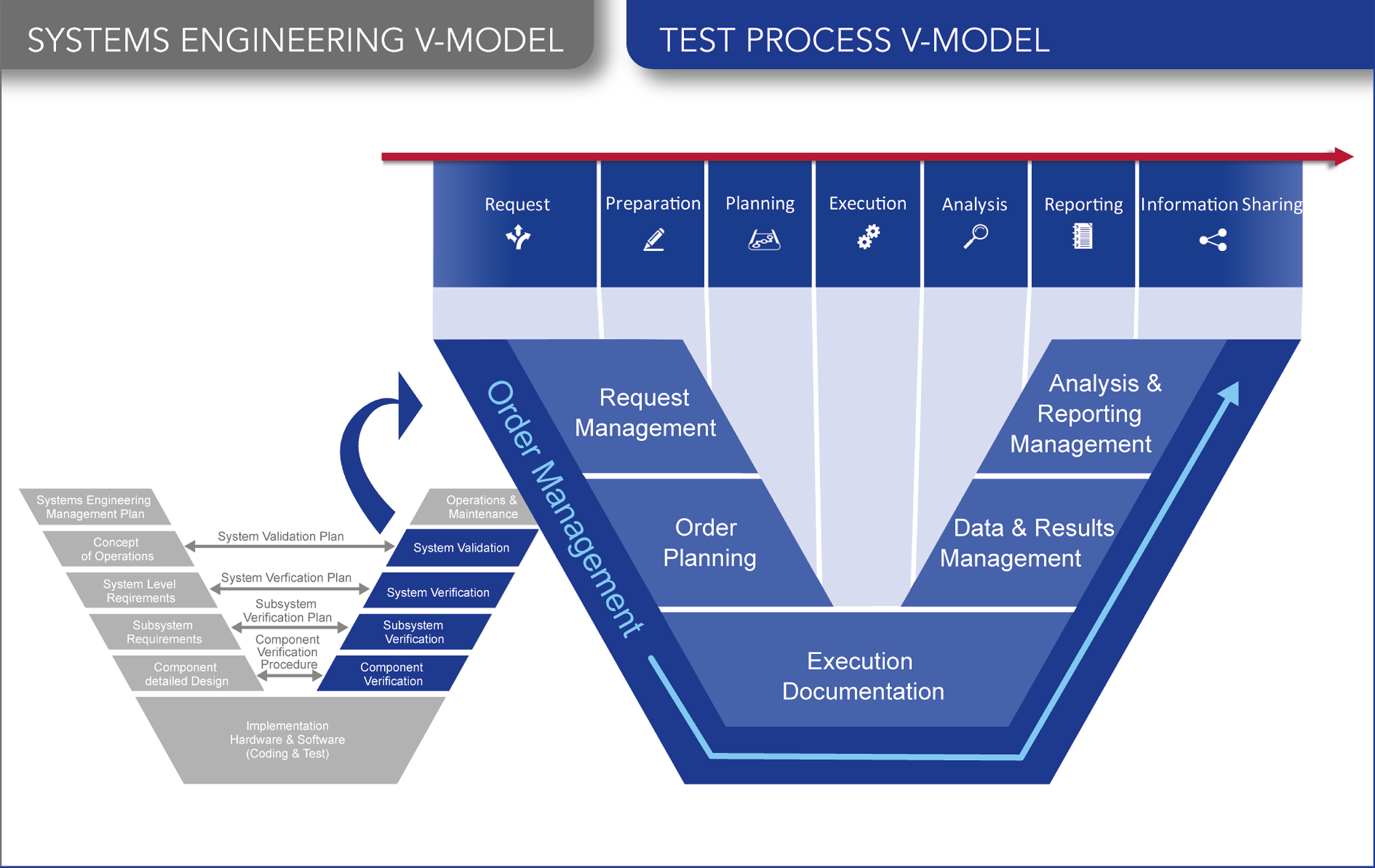Standardize your complex validation processes and reduce the time and cost of your product development significantly

Many companies are facing these challenges when asking our advice on efficient validation and verification in their product development process:
- Modifying new products in the development stage requires a great deal of effort and money if the individual development phases drag on for an extended period of time.
- Your design and engineering team has to carry out tests in early phases already in order to facilitate a resource-saving development.
- You need well-structured digital solutions to achieve interdisciplinary cooperation in validation.
- Apart from verification by physical tests, you are increasingly required to use virtual tests for validation.
- Different departments need reliable access to verified test results.
In order to competently meet all these challenges you need to have reliable digital solutions. Testing and validation along the development process are separate steps, which in turn are part of the overall process. The necessary access to data from other subprocesses is guaranteed by the test process V-model.
Learn how you can integrate your complex system for test process management in a logically structured and efficient way into your development process to minimize the duration and the cost of your product development.
Test process V-model: solve cross-cutting problems without blocking specialized, individual processes
As you know, problems often arise when subprocesses running in parallel are edited by different departments with different tools. To prevent trouble in this situation you need to have an IT architecture concept that offers solutions for cross-cutting problems as you may know from the sphere of systems engineering.
At the same time, the concept should make it possible for you to integrate software that offers solutions for specialized, individual processes. In other words, the overall system should reflect the complexity and the common features in the interaction of the subsystems.
And that is exactly where we go by the test process V-model.

It divides the overall process into single subprocesses that are coupled to well-defined interfaces. The coupling is "loose", though, which prevents modifications in your various subprocesses from blocking the overall process. Hence, you can safely identify, assess and adopt modifications at any time.
Well-defined interfaces play an important part in this. They are in charge of exchanging information between the subprocesses involved on planned and executed tests requiring adjustments even before the modification of a requirement is actually implemented.
The proven digital validation process for significantly shorter product development times and reduced development costs
Define
If you want to start a test process the very first thing you need is a defined request with resulting preparations to specify the requirements and necessary tests. You can import the requirements or enter them manually with the aid of suitable dialogs. In order to keep the number of tests low you should try to test several requirements in one single test.
Plan
This interface transfers details on the specific resources to the test order. Once the assignment of measurement equipment, units under test, test beds and staff is complete, you can define suitable methods and deadlines for test preparation and execution.
Execute
Now you execute the test according to plan and schedule. All results produced and accompanying materials like pictures or the test setup are carefully documented and transferred to a data management system where you can access them to analyze the data.
Analyze
The analyses taking place during and after the test run do not only evaluate the actual test results for you, they also analyze the associated context that was formed by linking the meta data.
Report and share information
You get the knowledge gained in the results and analyses summarized in a precise test report. So you can present the complex results to all authorized departments and the customer.
These are the 4 must-have interfaces your test process management system should provide:
A high-quality and holistically conceived test process management system is essential so that your data can mesh like cogs from the requirements to the final results report. It should provide you with the following interfaces:

With this proven test process management system you can avoid time-consuming and expensive product development
Only if your systems, data and process are integrated the way Werum's HyperTest® Boost accomplishes it, you can present important, test-spanning queries and results with reference to their context.
With such a system you will be much more efficient in retrieving results and comparing them. Authorized users can search the entire stock of data in a neatly arranged dashboard in order to transmit important pieces of information to the departments in charge, such as developers, test laboratory or management.
If you are interested in a proven test process management system that organizes all the above-mentioned necessary steps from first to last in one logical structure and solves them to your full satisfaction, then this is the right place for you.
Click here to see what Werum's HyperTest Boost as a reliable test process management system can do for your company!
